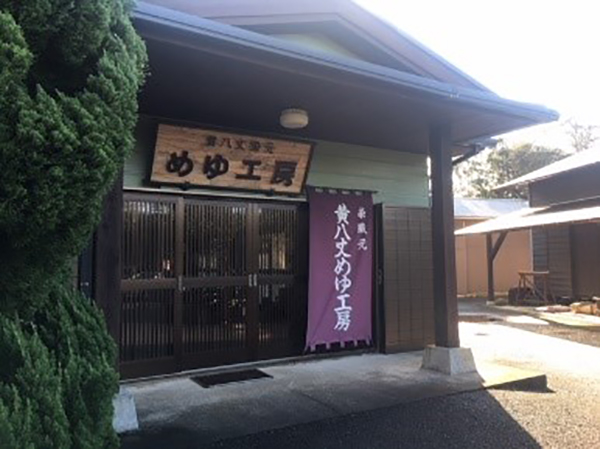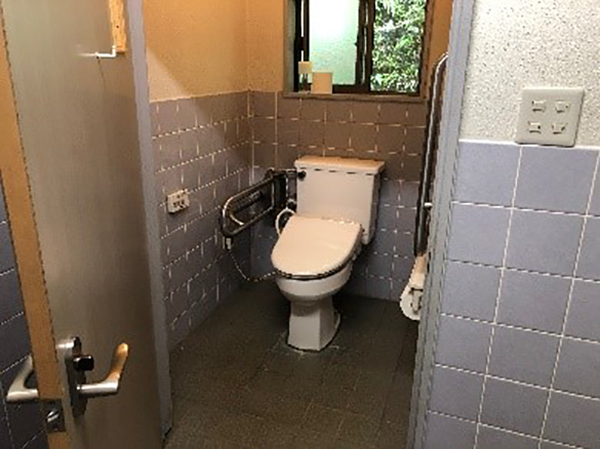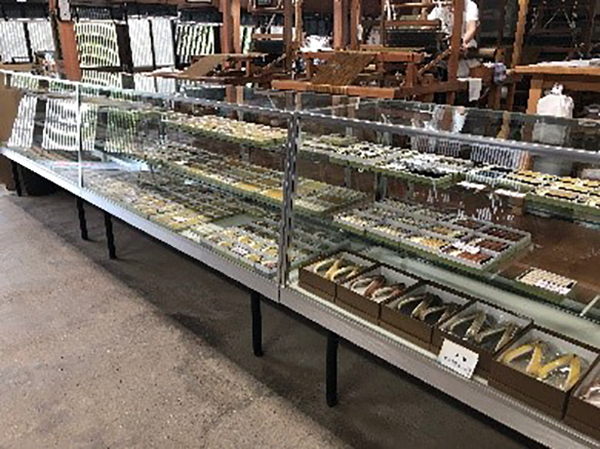- TOP >
- Efforts of Kihachijo Meyu Workshop
Efforts of Kihachijo Meyu Workshop 2542 Nakanogo, Hachijo-machi, Hachijojima, Tokyo
Hachijojima, the Hawaii of Japan
A 50-minute jetliner flight from Haneda Airport, Hachijojima is situated 285 km south of the Tokyo city center. With its warm climate, clear ocean water, and its lush natural landscape, it has been dubbed "the Hawaii of Japan," and was once a popular destination for Japanese honeymooners. Since the actual islands of Hawaii became more accessible, the number of tourists visiting Hachijojima has declined; nonetheless, the island remains one of Tokyo’s most prized tourist destinations that captures the heart of any visitor. In addition to its stunning nature, Hachijojima is home to a unique culture, including cuisine. Honba Kihachijo, a plant-dyed silk fabric indigenous to Hachijojima, is one of the 41 Traditional Crafts of Tokyo certified by the Bureau of Industrial and Labor Affairs, Tokyo Metropolitan Government. We were able to talk with Ms. Fumiko Yamashita of the workshop Kihachijo Meyu Kobo, one of the artisans keeping the art of weaving and dyeing Kihachijo alive.

Traditional but flexible
Our workshop goes back centuries, but Meyu Yamashita, my grandmother, first registered it as a business in 1917, so that makes it 103 years since we've officially been operating as Meyu Kobo. My grandmother, mother, and I—three straight generations—were awarded the Japan Folk Crafts Museum Award from the Nihon Mingei Kyokai (Japan Folk Crafts Association). This award is aimed to promote wholesome crafts that are of practical use in everyday life to support the advancement of traditional handcrafting and everyday craftwork. Because we place so much importance on tradition, people often assume that we use very old looms, but old looms tend to be hard to use because they've been conditioned to their former users. There's no point in fixating on using something that's hard to use. It's better to be more flexible, to use what works for you. This job lets you work at your own pace. No one has to come in at any fixed time, and there's no rush to finish, which makes it very convenient for women. I think that being able to continue working this way, with very little strain, lets us love our job and, consequently, motivates us to pass on the tradition to future generations.

A kominka (old farmhouse) that is inviting despite its barriers
The workshop building was renovated in 1996. We raised the floor from the doma (dirt floor) to give visitors a better view of our artisans at work. We prepared a space where they can rest, with tatami mats and picture books to keep children entertained. There are separate bathrooms for men and women, all wheelchair-accessible. We've accepted tour buses for decades, and many visitors to Hachijojima are elderly, as are our residents. Our daily encounters with these residents taught us a lot about how we should renovate our workshop building. At the time, we didn't know anything about barrier-free design, so we were surprised when a consultant dispatched by the Tokyo Metropolitan Government told us that our building qualified as an accessible tourism destination and should be advertised as such. This experience also reminded us of the importance of outreach. Next to our workshop is a kominka (old farmhouse) we call the Kogeikan (Craft Museum). The building is nearly 300 years old. To get inside, you have to take a big step up from the front entrance, a daunting feat for those with trouble walking, even if they don't need a wheelchair. This doesn't stop many of our older visitors from taking this step inside, however hard it may be for them, to sit around the irori (a traditional Japanese sunken hearth) to enjoy sharing stories about days gone by. We installed some legless chairs so that they can, at the very least, sit more comfortably. I feel it's also important to provide a relaxing atmosphere, not just making everything more convenient.


Ojare(Welcome) to Hachijojima!
I also serve as the head of the local tourist association, so even when I travel for pleasure, I'm always on the alert, thinking, "Oh, we could do this in Hachijojima!" That's how committed I am to promoting tourism on the island. I head the women's association as well, so our aging population is also very much on my mind. Flower industry is flourishing in Hachijojima, where elderly residents work to harvest flowers and trim leaves off the cut flowers. Their jobs give them independence, allowing them to make their own money and providing them a place where they can socialize with their peers. There are so many reasons for people to visit Hachijojima now. Cruise ships stop by at our ports, the Hachijojima Public Road Race, a marathon event held every January, is attracting more participants each year, and tourists can go whale watching in the winter. The more visitors and events we have, the more opportunities elderly residents have to contribute. They can explore ways to provide omotenashi (wholehearted hospitality) to our guests, create recipes using local ingredients, and refurbish kominkas—which have become a nationwide problem—into accommodation facilities. So, everyone, ojare (welcome) to Hachijojima!

 social media accounts
social media accounts
Tokyo, a city that is accessible everywhere to anyone.
Sightseeing where you wish, as you wish.
This ability to travel anywhere you please makes life that much richer.
Tokyo welcomes your visit.
Here you can encounter tradition,
history, culture, nature, technology,
and, best of all, smiling faces.
Making tourism closer and more
enjoyable through accessible tourism.




